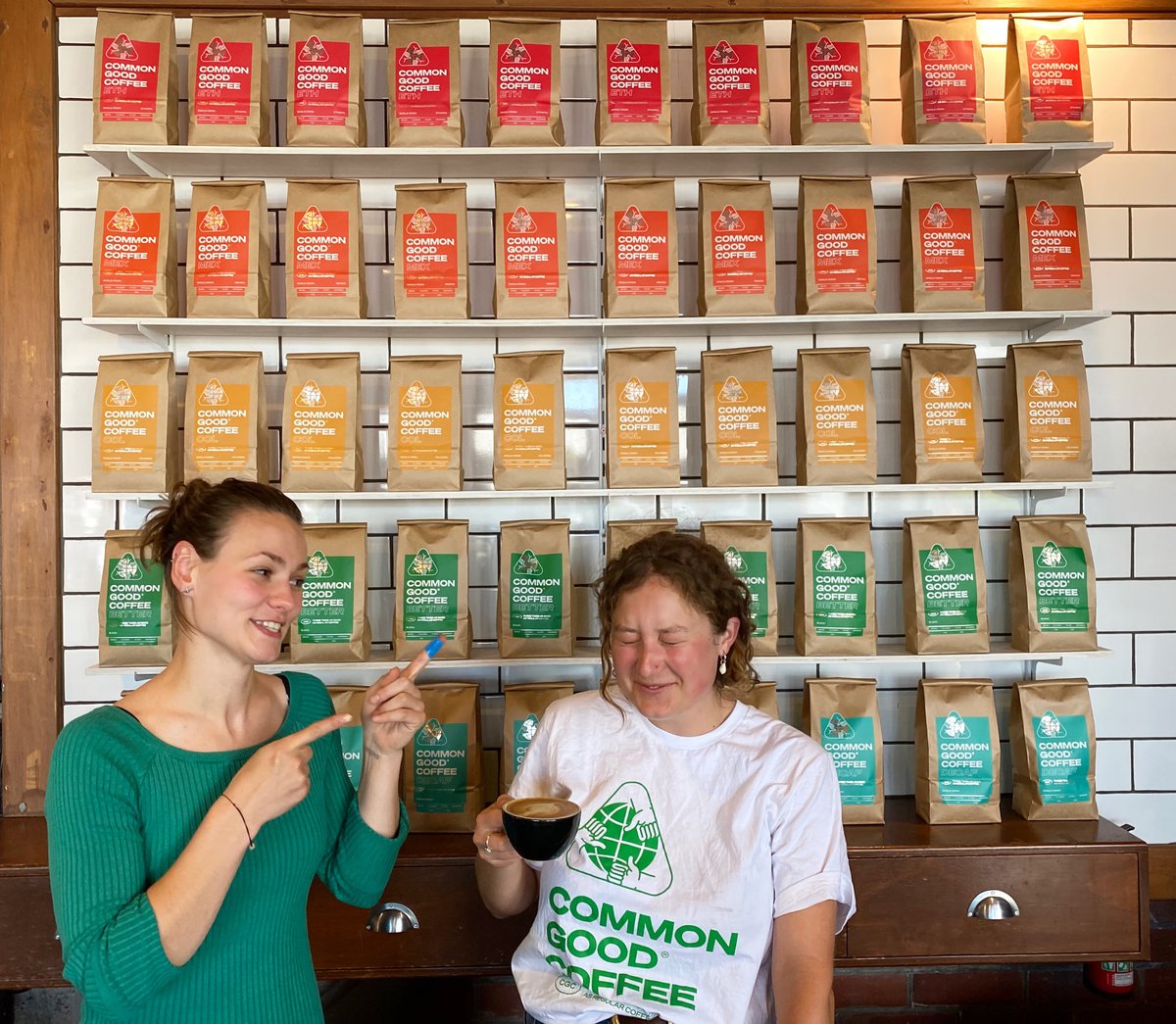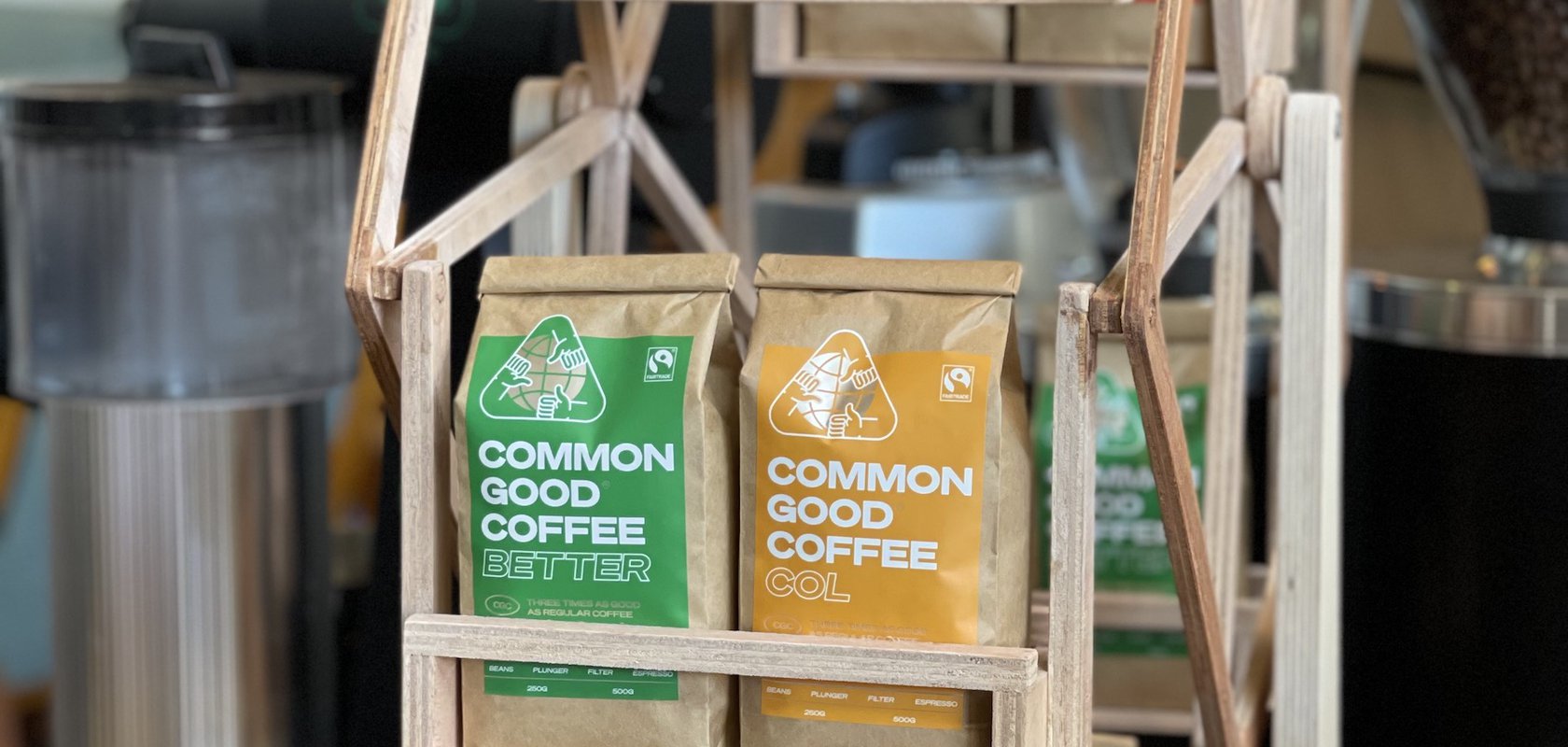Unsure which Common Good coffee is for you? Our chief roaster Vernon Omeri talks about the flavour profile of each to help you decide which one matches your personal taste. Of course, we recommend trying them all!
Common Good Coffee currently offers five different styles of coffee: a blend, three single origins, and an outstanding decaf – each of them ethically sourced and meticulously roasted.
Understandably, most people start with the Better Blend by default. After all, it is an amazing all-rounder, with accessibly smooth chocolate and hazelnut notes. But among those who do express a preference, “Most people say they like strong and dark, so we recommend the Colombian, which is full-bodied, dark, rich, and strong with a hint of vanilla sweetness.”
What exactly does “dark” mean? “Dark means different things to everybody,” says Vernon. “In Wellington, people are more into the Havana and L’Affare dark coffees. People equate dark with strong, but the Ethiopian has a strong flavour. People need to define what they want and expect from a dark coffee.
The Roasting Process

To a roaster, dark means it’s roasted longer. “The colour is darker, but not like a French or Italian roast to the point where oil comes out, causing smoke and bitterness. We avoid bitterness by not roasting too far from the second crack. We may miss out on some of the flavours it could have, for example, citric flavours, but it’s still pretty smooth. It’s dark without going overboard. If you think about Whittaker’s dark cacao, it’s like 60 percent.”
For the uninitiated, the crack we’re talking about here is what happens to a bean during the roasting process. Water inside the bean, which is actually a fruit resembling a cherry, becomes steam when heated, elevating the internal pressure and causing the bean to expand and eventually crack open. This “first crack” starts to change the flavour and colour of the bean and is associated with a light roast. The lighter the roast, the more acidic and fruity the notes you’ll be able to taste – as is the case with Common Good’s Ethiopian single origin. Keep on roasting, and the bean cracks again. The longer the roast after second crack, the more bitter the taste and darker the colour.
A Roast for Every Palate
“For people who like dark roast, they can go for the Colombian,” Vernon says. “And if you want something interesting but not so fruity or crazy, try the Mexican. The Ethiopian’s my go-to, as a natural filter coffee, for something a little bit more ‘X factor’ and different.”
Made late in the season, when the cherries are too dry to pulp and wash, this sundried coffee has a blueberry or slightly overripe fruit aroma. Its flavour is full and rich, with dark caramel, berry fruit, rose petals, a silky wine-like body, and a long, fruity aftertaste. It’s what Vernon would recommend to the coffee aficionado or someone looking to challenge their palate.
In line with popular tastes, Common Good is always conscious of choosing coffee that pairs well with milk, which means that while it can be bright and acidic, as with the Ethiopian, it can’t veer too sour. Nor too bitter, as with a French or Italian roast. Over Christmas, Vernon found that he and his family loved the Mexican most, for its accessibility and versatility. “It’s a great stand-up coffee I was using over the holiday going camping. They love it with soy.”
The decaf, hailing from Honduras, is actually Vernon’s personal favourite right now, with a medium milk-chocolate character and enticing caramel and malt aroma. He often drinks several cups a day and challenges you to taste-test alongside any caffeinated coffee and see if you can tell the difference. “It’s great for people watching their caffeine for health reasons,” he says, though the taste won’t feel like a compromise at all. “People mistakenly think that flavour comes from caffeine but it doesn’t. It comes from the bean’s oils. Everything about the character of the bean is still there, just without the caffeine.” It’s the perfect cuppa after 2pm – or anytime!
The Common Good Line-up

At the end of the day, a lot of love goes into making sure that Common Good’s beans brew an outstanding cup. With a bean profile to suit every taste, you’re assured a delicious experience.
Plunger, filter, or espresso: which method pairs best with each coffee and why?
Medium-light roast: Ethiopia Sidamo-4 heirloom grown at altitudes ranging from 1700 and 1900 metres. Bursting with blueberry fruit and delicate lemon zest. Bold and favoured for its bright acidity and depth. The Sidamo region grows some of the best-known coffees from Ethiopia, the birthplace of coffee. Ideal for: Filter, Espresso.
Medium roast: Mexico Chiapas (San Fernando) - Typica, Bourbon, and Mondo Novo grown at altitudes ranging from 900 to 1600m. Light, fresh, leafy aroma. Mild and smooth, with a good clean acidity and slightly smoky hazelnut or fruit flavours, it also has a light but creamy body. Ideal for Plunger, Filter, Espresso.
Medium-dark roast: Colombia (ANEI) – Colombiana and Typica grown at altitudes ranging from 1200m to 1800m. Faintly sweet toffee, malty fragrance. Soft, smooth acidity and slightly citric with a medium body and malty, sweet vanilla flavour and lingering aftertaste. Ideal for: Plunger, Filter, Espresso.
Medium-dark roast: Common Good’s Better Blend combines all three of our single origins in to give you a full-bodied cup every time. Savour chocolate, toffee, and hazelnut notes complemented by a lingering burst of vanilla and dark cocoa. Ideal for: Plunger, Filter, Espresso.
Medium roast: Common Good’s Decaf comes from Honduras Icatu and Yellow Catuai, decaffeinated by Descamex in Veracruz, Mexico. Certified organic, no artificial solvents, 100% water-processed, and charcoal-filtered for maximum coffee-soluble saturation and flavour. Caramel and malt aroma. Medium-bodied, sweet, mild milk-chocolate character. Ideal for Filter, Espresso.

